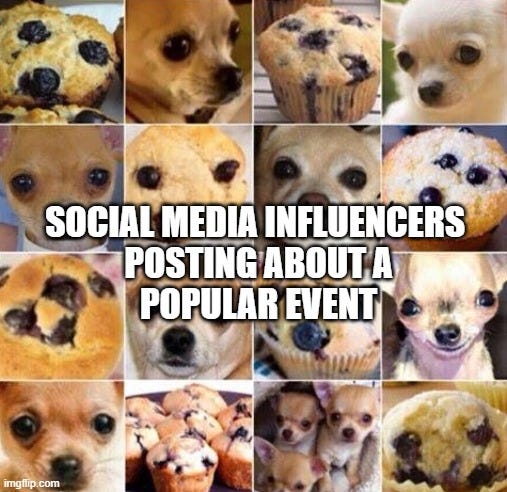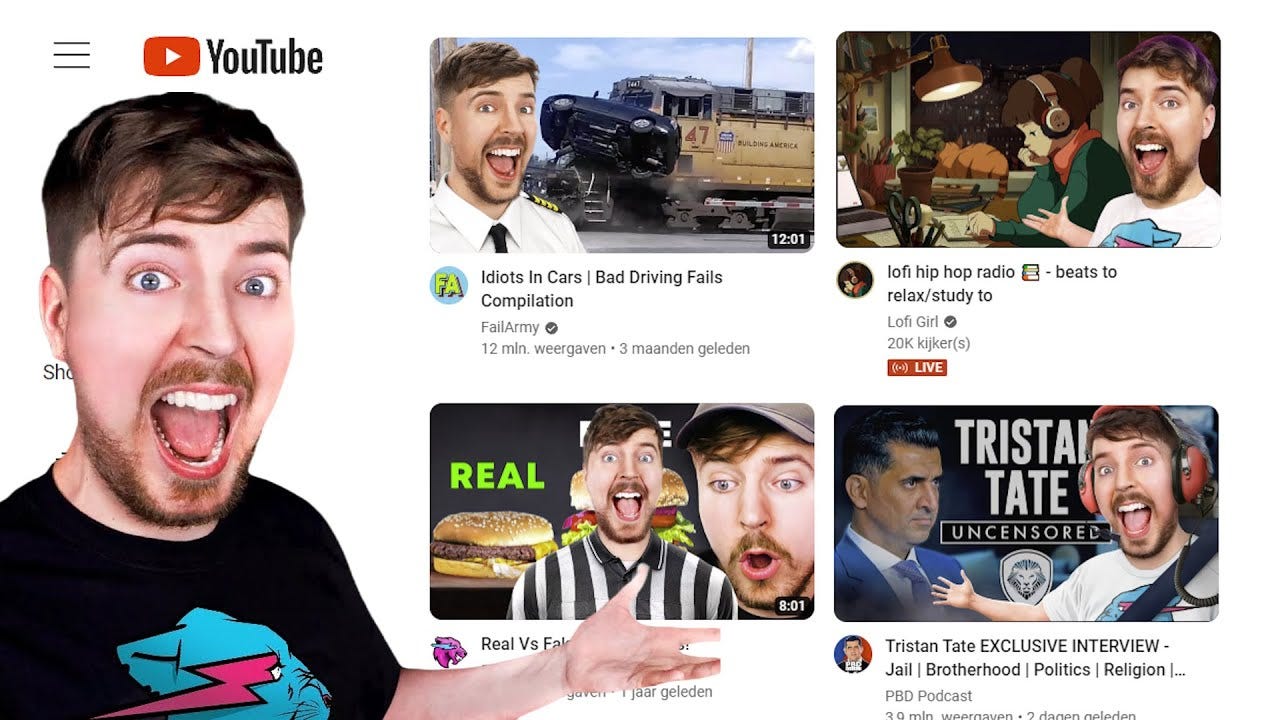A look into the OpenAI drama, Q* and Social Media
Analyzing the Game Theory of Social Media and how it kills creativity
I wrote this piece yesterday for my sister publication, Tech Made Simple. For some reason, Substack didn’t cross post it properly (Substack says 0 emails delivered to readers of AI Made Simple). So I’m copying the over. Atm, this is pretty much the only useful thing I have to say about Q*.
Over the last week, we’ve seen our social media feeds flooded with posts about the Sam Altman/OpenAI drama (and now Q*). What stands out to me is that most of these posts don’t really add much to a conversation- they say exactly what every other person has said. You could delete most of those posts from existence and lose no information whatsoever.
This is something that I’ve noticed with a lot of social media posts. Most memes, thought pieces and stories are regurgitated, with no actual value add. How many times have we heard the story of survivorship bias on WW2 planes, read a post about the importance of perseverance in entrepreneurship, or seen almost every meme page drop the same joke?
In this post, we will be looking at the game theory of social media to answer the following questions-
Why does everyone copy-paste the same content?
How this kills creativity and critical thinking
Social Media as a tool for pushing conformity and compliance
Most posts on Social Media on any given topic are interchangeable mediocrities. Let’s start exploring why and the dangers this brings.
Key Highlights
How Social Media incentivizes copying- Humans have a natural proclivity to copy others. Social Media cranks this up to the extreme. In order to catch the “trends” or to do things “the right way”- everyone ends up looking/feeling the same. This is heightened by “the algorithm”. As any (honest) creator will tell you- successful content is not created for people but the social media algorithms. Peer pressure is no longer just the people in your vicinity, but the faceless masses all indirectly giving their inputs on what you should do. All of this means that instead of encouraging uniqueness and finding individual voices, social media platforms mass-produce clones that all conform to certain specifications. In essence, what started as a way to express yourself authentically has now created a race where everyone presents themselves to fit norms. Reality is always so much funnier than fiction, ain’t it.
How this kills creativity and critical thinking- Since everyone is trying to impress society and the algorithms, people are incentivized to engineer content that hits all the human triggers (dopamine spikes, emotional investments,…) instead of standing out. To be too unique and too divergent risks social exclusion (no more views). Combined with the recommendation systems- this creates echo chambers. People fall into these echo-chambers, see other around them parroting the same things, and accept statements without question. Instead of getting into the habit of slowly evaluating whether or not given information makes sense (and to what extent it’s applicable to our lives), social media gets us into the habit of ingesting more and more until ideas become axiomatic to our thought.
How Social Media acts as a tool for propaganda and social control- The overwhelming information and stimulus of constant content consumption leads to a reduction in available mental resources. This creates a strong feedback loop, making you more likely to accept things without critical thought. This has been used by Wall Street to take your money, by fossil fuel companies to stop climate action, and by governments to secure power.
That is a lot of words, so I’ve created an image for the flywheel these cause-
Let’s look into this in more detail.
A look into why Social Media creates Assembly Line Creators
Those familiar with YouTube will be familiar with the “Mr Beastification of YouTube”- where we see YouTubers mass produce Mr Beast-like thumbnails, content ideas, and production styles. On other platforms people copy post structures (here’s how to write posts that get 100 Million Impressions on LinkedIn…), hooks/closing and marketing strategies (brands copied Wendy’s in trying to create witty and ‘relatable’ social media accounts). Posts teaching you about virality, growth hacks, and getting more views are some of the most viral posts out there.
Societally, we have become more obsessed with gaming the algorithms and hitting vanity metrics instead of saying something interesting. Creators would rather comply with their niche, since that way they can carve out their own audience. To say something different, is to risk being excluded from the social media rabbit hole. Better to say the same things as others, and let people love you through confirmation bias. Increasingly, social media platforms from businesses and individuals are sanitized, generic, and impersonal- too busy trying to be inoffensive to everyone to have an individual voice.
All of this creates strong evolutionary pressures on the system. Post everyday at 8 AM, use 3 trending hashtags, talk about the most relevant topics, use thumbnails formatted with extreme attention to grab attention etc. The implicit message is clear- do the same as everyone else or risk obscurity (the social media equivalent of social isolation).
Take the trending sections on platforms like LinkedIn, Twitter, and YouTube. From a creator perspective, it adds a clear incentive to quickly jump on my soapbox to join whatever circus is newest in town. I’ll talk about the trendiest topic, using the best hooks and structure, trying to craft my message to appease the algorithm and not trip on any livewires- all so I can gain some attention.
Let’s circle back to the OpenAI drama. Or Q*. Sure they’re important. But until we know more about what went on, posts on them are just noise. They add nothing to the conversation, and neither topics needs more awareness it. Contrast that with two other developments that seem to be conspicuously missing from most social media discussions-
If any of these had any semblance of mainstream attention, influencers would be waxing lyrical about these events. But currently, we’re looking at radio silence. The algorithm doesn’t care about this topic, so we say nothing about it.
As you can see, there is a strong bias towards sameness in every facet of social media. Whether it’s picking the same trending topics, using the same tactics to gain your attention, saying the same things as others to shortcut success, or avoiding the same taboos to please the algorithms; creators are all morphing into the same thing- interchangeable mediocrities.
For a lighthearted example, let’s take a look at Instagram. Someone made it trendy to hook people in with regular updates through stories. So now, my stories feed is filled with pretty pictures of either lunch/coffee/ice cream, or posing before heading out to do relatively normal things. People put in so much effort to diligently record and post themselves themselves doing so little (and don’t even get me started on the effort that goes into filters and photoshop), because that is the meta of IG.
All of this has consequences on society’s ability to think creatively and critically. Let’s talk about how.
How this kills creativity and critical thinking
When people see these mass-produced pieces of content, our mental biases kick in. We’re more likely to believe things we see repeatedly (and things with social proof). Since social media platforms prioritize content that favor engagement, we’re also going to spend our mental resources on the additional consumption (either the comments or other videos/posts). This builds up cognitive fatigue. Thus, we become willing recipients of the all the subliminal messaging fed to us through the content. We also get into the habit of accepting things presented to us in certain formats/by certain people- instead of thinking things through ourselves. Consumption and not evaluation/action becomes the norm.
This is where things go very wrong. Depending on the messaging consumed, this leads to fear, misinformation, and paralysis by analysis. Whether it’s hyping something (or demonizing it)- it’s possible to overload the brains of people into accepting narratives. This was used very successfully by the Crypto Industry to steam billions from vulnerable retail investors. Something very similar is happening in AI right now.
Let’s end this piece with a note on how Social Media enforces conformity
Social Media as a tool of Social Control
We’ve already talked about how social media incentivizes sameness in ideation and presentation. And how it causes cognitive overload- impairing creativity and critical thinking. So it should not be a surprise that it can be used as a method of social conformity by powerful groups.
The most obvious case is the use of the algorithm as a censoring tool. People shy away from covering topics that might get them demonetized/banned. I was myself shadow-banned on TikTok and Instagram for talking about topics like the lies on Climate Change, the importance of Unionization, evading mass surveillance, and the prominence of child labor. I kept things non clickbaity, cited research, and never tried to sensationalize anything. Yet, I was caught by this. Social media algorithms have been active in hurting good faith conversations about various topics such as Covid, Health/Fitness, Economic Inequalities and more.
By restricting what people can and can’t say, you can restrict access to information. By overloading people mentally, you can prevent them from taking meaningful action. And you can always use social media to bully/spam people into submission.
Here are some other ways that this has accomplished-
I still believe in the power of Social Media and the good it can do. I’m one of the few that thinks that social media is a massive net positive (to both me personally and societally). However, as with many other things, it is important to recognize the potentially perverse incentives and fight back against it. Otherwise, Social Media will be used on us, instead of by us.
If you liked this article and wish to share it, please refer to the following guidelines.
That is it for this piece. I appreciate your time. As always, if you’re interested in working with me or checking out my other work, my links will be at the end of this email/post. And if you found value in this write-up, I would appreciate you sharing it with more people. It is word-of-mouth referrals like yours that help me grow.
Reach out to me
Use the links below to check out my other content, learn more about tutoring, reach out to me about projects, or just to say hi.
Small Snippets about Tech, AI and Machine Learning over here
AI Newsletter- https://artificialintelligencemadesimple.substack.com/
My grandma’s favorite Tech Newsletter- https://codinginterviewsmadesimple.substack.com/
Check out my other articles on Medium. : https://rb.gy/zn1aiu
My YouTube: https://rb.gy/88iwdd
Reach out to me on LinkedIn. Let’s connect: https://rb.gy/m5ok2y
My Instagram: https://rb.gy/gmvuy9
My Twitter: https://twitter.com/Machine01776819






As always, well put Devansh. the nature of social media is something I think about a lot and I've written about before. It's refreshing when someone is honest on social media. Isn't that sad?
I find that most of my essays are poking at these meta themes to find the truth. And sadly growth is much slower than if I just regurgitated derivative content.